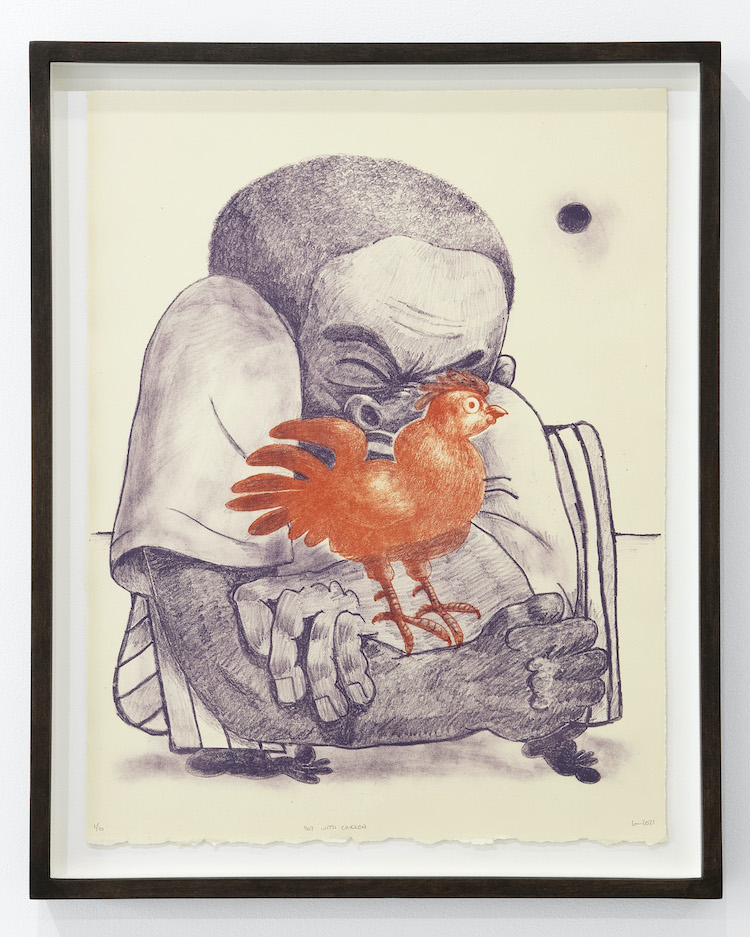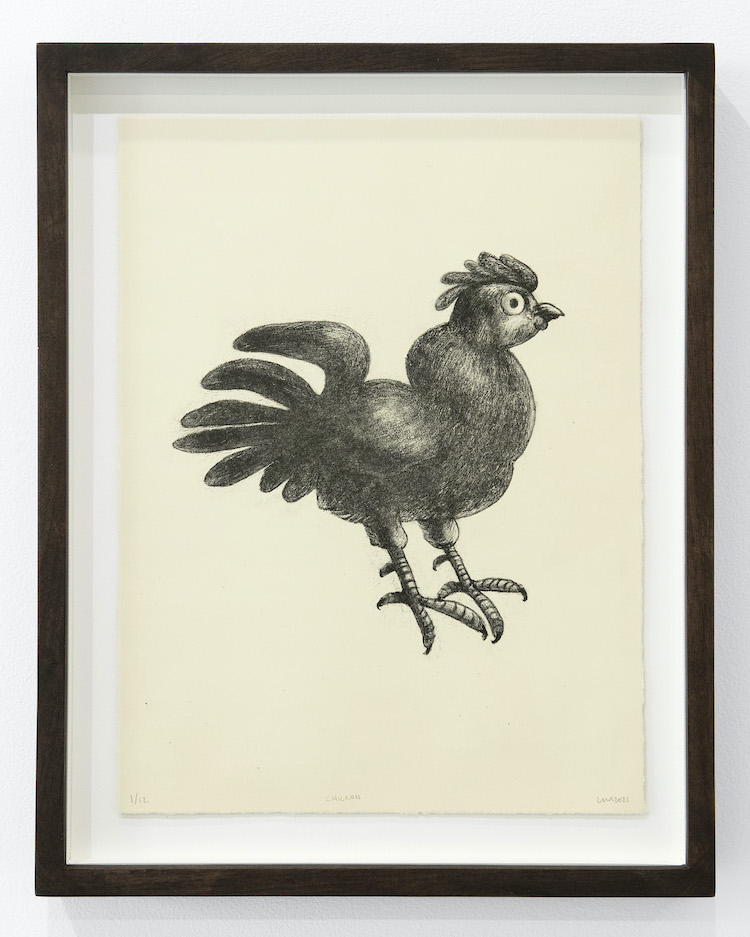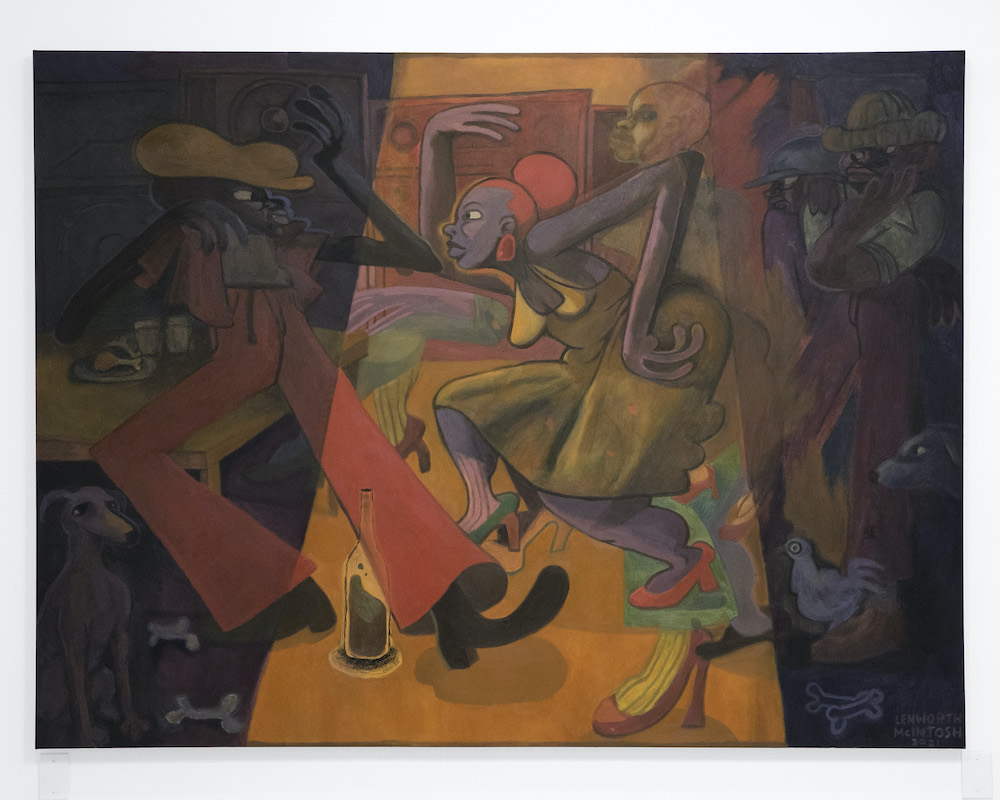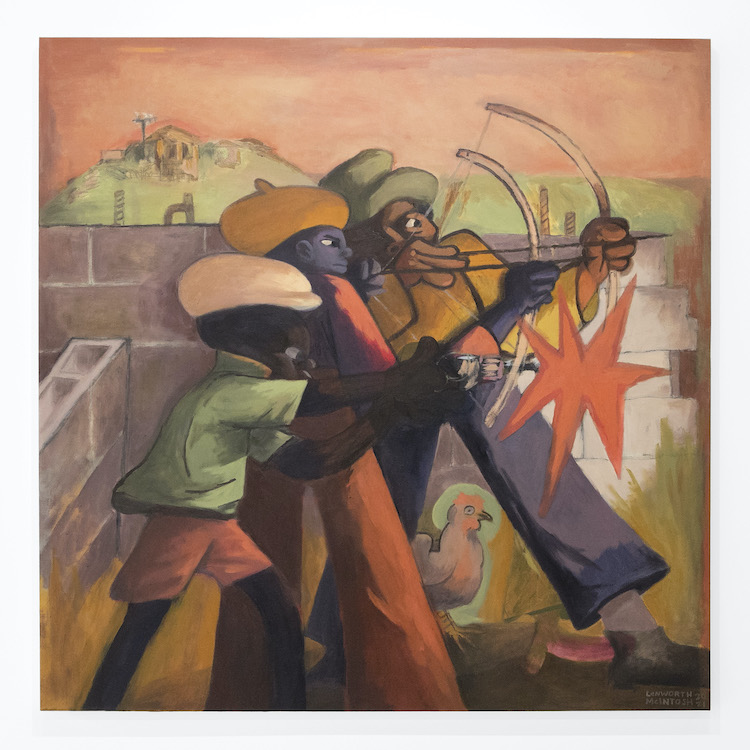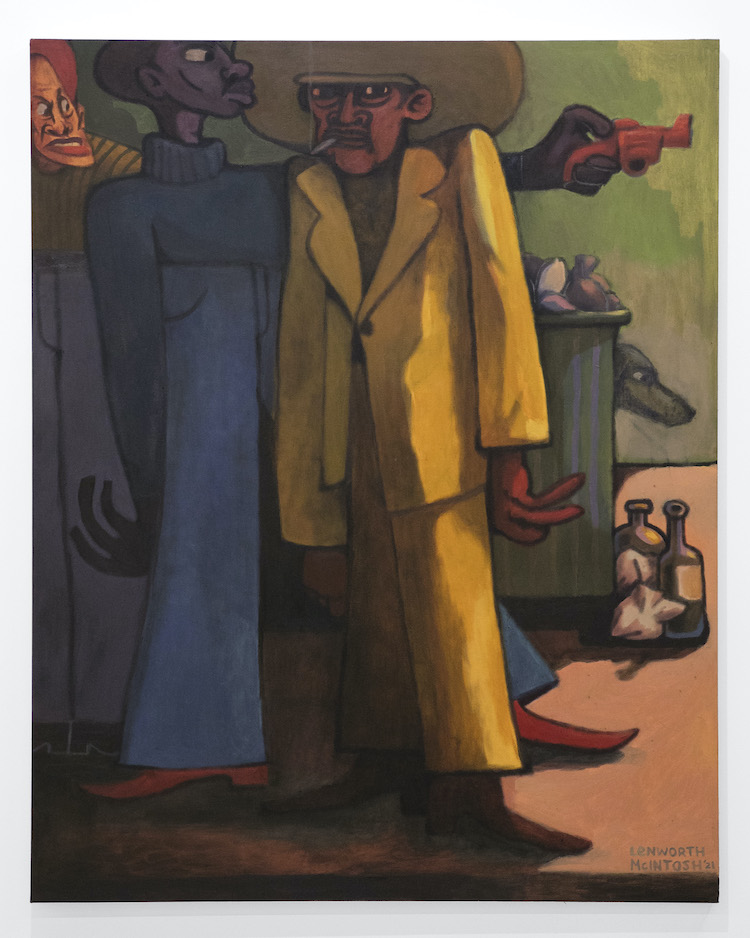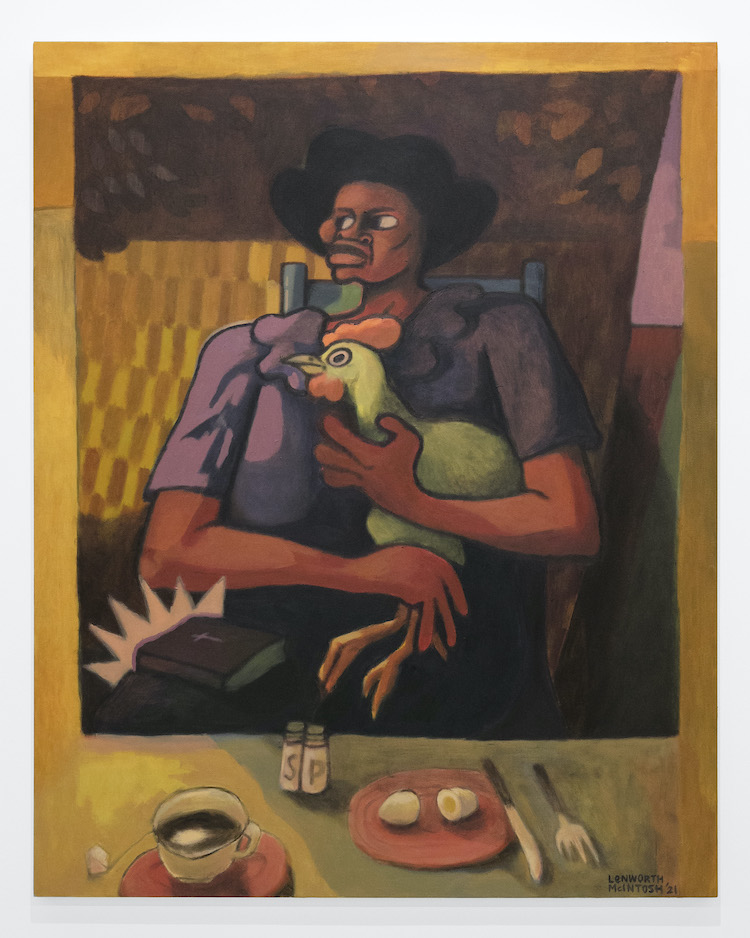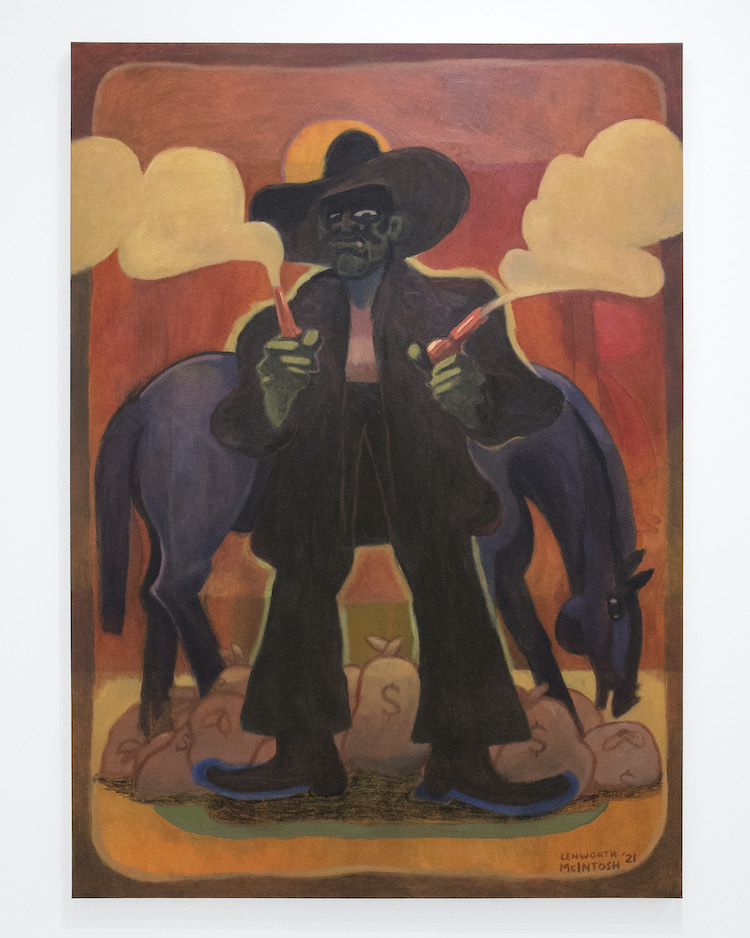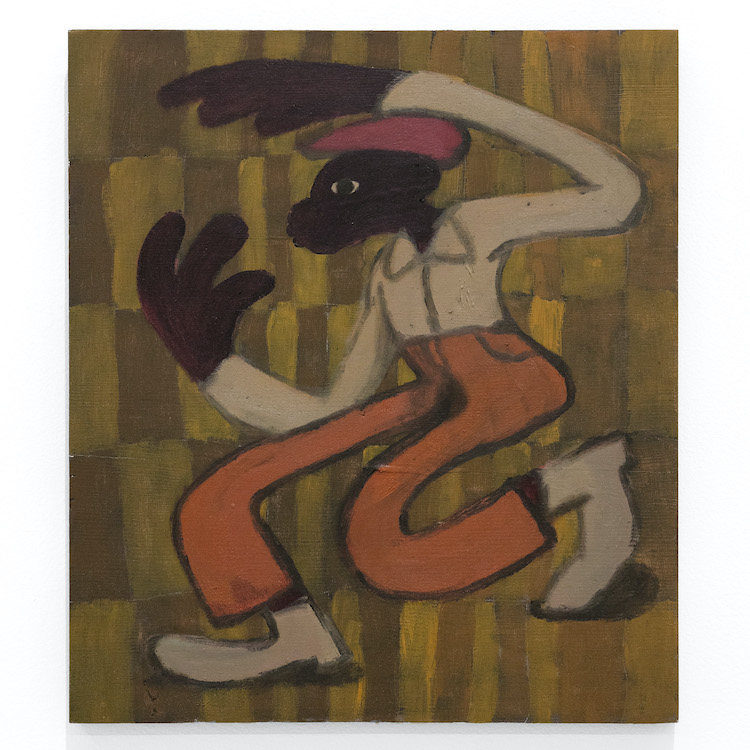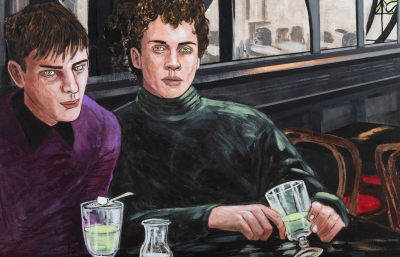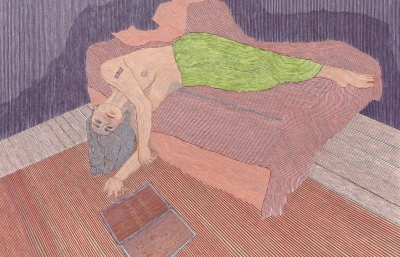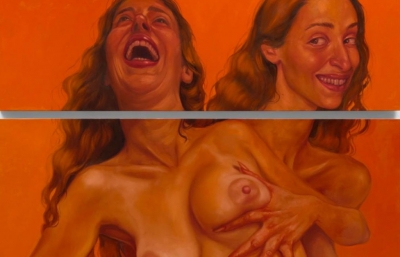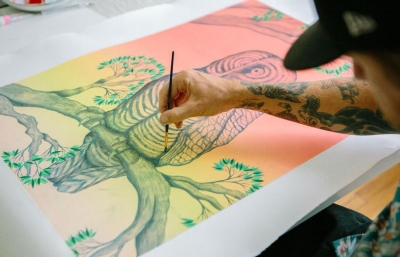pt. 2 Gallery is pleased to announce The Stories I Tell Myself, a solo exhibition of new paintings by Lenworth McIntosh. For McIntosh’s second solo exhibition with the gallery, he draws on memories of his native Jamaica, exploring the influence of television during his upbringing, as well as heightened energy instigated by other creative forms such as music and dance. Scenes of matriarchs, cowboys, and late nights on the town reveal the ways in which memory and imagination overlap, blurring the line between truth and discovery.
Cast in hazy tones that emanate a rich warmth, McIntosh’s paintings tell a story of a day in the life in his native Jamaica - one that alludes to the lifecycle as whole. The day begins at home, at breakfast with his step-grandmother, who has prepared peppermint tea and hard-boiled eggs before school. While the unseen protagonist's day has just begun, his step grandmother’s has not. McIntosh pays homage to her work in raising him by depicting the moment of solace palpable on her face as she relaxes.
The day continues later on, with the image of a larger than life cowboy looming in front of a horse, a smoking gun in each hand. The scale of the bandit, towering over the viewer, harkens back to afternoons spent in front of the TV, poring over westerns broadcasted from the United States. Despite the air of villainy suggested by the cowboy’s guns and shrouded face, the memory and scale of the cowboy McIntosh and his peers took from Westerns about good guys and bad guys. Oftentimes, they found themselves sympathetic to the so-called villain, whose agenda often made sense. Rather, the villain might be marked as “bad” for acting against the grain or against the system. Good and evil, they learned, is not absolute.
The pervasive influence of the western media manifests in the following painting, in which three children play an imaginary game. Drawn in profile, each child has a look of determination and focus on his face. As McIntosh remembers, they tried to “Pretend as much as you can to be as real as you can.” Attempting to manifest TV into reality, the children play to replicate the characters and actions they see on TV. Yet as demonstrated through the comic flash covering the front child’s gun, the line between innocence and adulthood has not yet been crossed , the fictitious actions remain a play. A pink haze radiates in the background, the sun setting on this moment of youthful innocence.
In the painting Every Ghetto Yute Wahn Fi Play Gangsta Role, the children’s pose is mirrored, this time three grown men stand in a trash and booze cluttered alley. The look of playful focus has been replaced by menace, and the gun in the principal figure’s hand is now a physical manifestation of the violence and menace they impose. While their poses mirror the children’s they fill the space differently, almost filling the picture plane. Much of the image is dedicated to their corporal form, clad in exuberant fashion of wide lapel jackets and high waisted pants. These men have stepped into the shadows, their identity now defined by a different form of media. 
The climax of the day takes place in the dance hall, in a frenetic scene of dance and energy, where bodies twist, turn and overlap. Two central figures lock their gaze, dancing in the light, the rhythm of an unseen bad pulsing through their bodies. To the right, two onlookers, themselves reminiscent of the men from the prior painting, observe from the shadows. The distinction between lightness and darkness separates the dancers from the watchers. While the former appears to retain a glimmer of childhood freedom and innocence, the latter are drawn towards the dark. Yet, like the cowboy, they exist without absolutes. They may not venture into the light, but they still have some good within them. The crowd in the dance hall portrays not just the two extremes, but those who can cross those borders and reach harmony and balance.
Together, the cycle of paintings creates a loose day, not quite linear, yet not entirely disassociated. The day itself stands in for development in its entirety, studying the transition from child to man, from freedom and innocence to growth and responsibility. For McIntosh, who left Jamaica at a young age, the series acts as a means to revisit his time there with a critical eye. Digging through the haziness and infallibility of memory, the story doesn’t necessarily have a beginning, middle and end, rather, a series of events that help him examine who he is and who he could have been.

